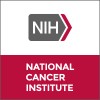
Ofatumumab and Bendamustine for Previously Treated Chronic Lymphocytic Leukemia (CLL)
Chronic Lymphocytic LeukemiaSmall Lymphocytic LymphomaThe purpose of this study is to evaluate the safety and effectiveness of the combination of bendamustine and ofatumumab in subjects with relapsed/refractory chronic lymphocytic leukemia and small cell lymphoma. All subjects enrolled on this study will receive both drugs by intravenous (IV) infusion.

Partially HLA-Matched Irradiated Allogeneic Cellular Therapy After Reduced Intensity Total Body...
LeukemiaLymphoma2 moreRATIONALE: Giving low-dose total-body irradiation before a donor stem cell transplant helps stop the growth of cancer cells. It also stops the patient's immune system from rejecting the donor's stem cells. The donated stem cells may replace the patient's immune cells and help destroy any remaining cancer cells (graft-versus-tumor effect). PURPOSE: This phase I trial is studying the side effects of donor stem cell transplant after total-body irradiation and to see how well it works in treating patients with relapsed or refractory hematologic cancer or acute myeloid leukemia or acute lymphocytic leukemia in complete remission.

Bendamustine Plus Alemtuzumab for Refractory Chronic Lymphocytic Leukemia (CLL)
Recurrent Small Lymphocytic LymphomaRefractory Chronic Lymphocytic Leukemia4 moreThis phase I trial is studying the side effects and best dose of alemtuzumab when given together with bendamustine hydrochloride in treating patients with relapsed chronic lymphocytic leukemia (CLL) or small lymphocytic lymphoma (SLL) that did not respond to fludarabine phosphate. Drugs used in chemotherapy, such as bendamustine hydrochloride, work in different ways to stop the growth of cancer cells, either by killing the cells or by stopping them from dividing. Monoclonal antibodies, such as alemtuzumab, can also block cancer growth in different ways. Some block the ability of cancer cells to grow and spread. Others find cancer cells and help kill them or carry cancer-killing substances to them. Giving bendamustine hydrochloride together with alemtuzumab may kill more cancer cells.

SCH 727965 in Patients With Mantle Cell Lymphoma or B-Cell Chronic Lymphocytic Leukemia (Study P04715)...
LymphomaMantle-Cell4 moreParticipants will be randomized to SCH 727965 or a comparator drug (bortezomib for mantle cell lymphoma [MCL] or alemtuzumab for B cell chronic lymphocytic leukemia [B CLL]). Part 1 of the study will determine the activity of SCH 727965 treatment in participants with MCL and participants with B-CLL. Part 2 of the study will determine the activity of SCH 727965 treatment in participants who experienced disease progression after standard treatment with the comparator drug during Part 1.

Chemotherapy, Total-Body Irradiation, Donor Natural Killer Cell Infusion, Aldesleukin, and UCB Transplant...
LeukemiaRATIONALE: Giving chemotherapy and total-body irradiation before a donor umbilical cord blood stem cell transplant helps stop the growth of cancer cells. It may also stop the patient's immune system from rejecting the donor's stem cells. When the healthy stem cells and natural killer cells from a donor are infused into the patient they may help the patient's bone marrow make stem cells, red blood cells, white blood cells, and platelets. Giving interleukin-2 (IL-2, aldesleukin) after transplant may stimulate the natural killer cells to kill any remaining cancer cells. PURPOSE: This phase II trial is studying the side effects of giving combination chemotherapy together with total-body irradiation followed by interleukin-2 (IL-2, aldesleukin), and umbilical cord blood transplant and to see how well it works in treating patients with relapsed or refractory acute myeloid leukemia.

Clofarabine and Cytarabine in Treating Patients With Acute Myeloid Leukemia With Minimal Residual...
Adult Acute Myeloid Leukemia in RemissionAdult Acute Myeloid Leukemia With 11q23 (MLL) Abnormalities5 moreRATIONALE: Drugs used in chemotherapy, such as clofarabine and cytarabine, work in different ways to stop the growth of cancer cells, either by killing the cells or by stopping them from dividing. Giving clofarabine together with cytarabine may kill more cancer cells. PURPOSE: This pilot phase II trial is studying how well giving clofarabine together with cytarabine works in treating patients with acute myeloid leukemia with minimal residual disease

A Study of the Safety and Preliminary Efficacy of Oral Midostaurin (PKC412) in Relapsed or Refractory...
Acute Myeloid LeukemiaAcute Lymphoblastic LeukemiaThis is a phase I/II pediatric dose-ranging study that will evaluate the safety, tolerability, clinical response, pharmacokinetics and pharmacodynamics of midostaurin in patients <18 years of age who have relapsed or refractory acute leukemias that may benefit from administration of midostaurin, including MLL-rearranged ALL and FLT3 positive AML.

Combination of 5-azacitidine and Lenalidomide in Myelodysplastic Syndromes (MDS) or Acute Myelogenous...
Myelodysplastic SyndromesAcute Myelogenous LeukemiaThe hypothesis of this study is that 5-aza and lenalidomide act synergistically in MDS and AML patients with chromosomal abnormalities involving monosomy 5 or del5q. Therefore, this phase I study will investigate the maximum tolerated dose (MTD) of lenalidomide in combination with a fixed dose of 5-aza in this patient population.

Retreatment Protocol for BL22 Immunotherapy in Relapsed or Refractory Hairy Cell Leukemia
Hairy Cell LeukemiaBL22 is a type of protein that scientists have created to interact with certain cancer cells. Experiments have shown that BL22 can bind with cancer cells that have a particular kind of protein (called CD22 ) on their surface, and can kill those cells. CD22 is present on certain types of hairy cell leukemia (HCL) cancer cells, and researchers have been working on treatments that will use BL22 and other related proteins to interact with and kill these kinds of cancer cells. The primary purpose of this study will be to provide access to and treatment with BL22 for patients who have HCL in order to determine their response to the treatment. In addition, the study will assess potential side effects of BL22 and examine why some patients respond better than others to treatment with BL22 and related therapies. This study will include about 21 to 25 adults who have been diagnosed with forms of HCL that have not responded well to standard treatments such as surgery, chemotherapy, or radiation therapy. These adults also will have received anti-CD22 therapies before, potentially including treatments with BL22, and have not developed immunity or resistance to these treatments. Prior to the study, patients will undergo a 1- to 2-week screening period to assess their eligibility for treatment. Eligible patients will participate in the study for up to 16 cycles of treatment, with each cycle lasting approximately 4 weeks. For each cycle, patients will receive 1 prescribed dose of BL22 every other day for a total of 3 doses per cycle, and will be assessed after every cycle to evaluate the success of the treatment. During the evaluation visits, patients will be required to have a brief physical examination, give blood and urine samples for testing, and undergo other tests as need to check heart and kidney function and assess the state of the leukemia. Patients who agree will give additional blood, urine, or bone marrow samples for future research purposes.

Nonmyeloablative Stem Cell Transplantation for Chronic Lymphocytic Leukemia (CLL)
Chronic Lymphocytic LeukemiaThe goal of this clinical research study is to learn if lenalidomide, when given with a stem cell transplant and chemotherapy (bendamustine, fludarabine, and rituximab), can help to control CLL. The safety of this treatment combination will also be studied.
